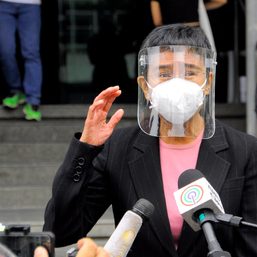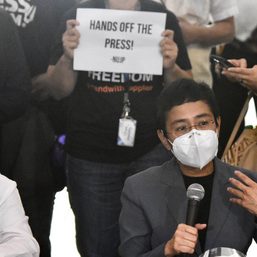SUMMARY
This is AI generated summarization, which may have errors. For context, always refer to the full article.
MANILA, Philippines – Dustein Sibug’s black and white photograph of a soldier in tears holding up the lifeless body of a child has symbolized the destruction of Tropical Storm Sendong.
The single, powerful image did the rounds of news platforms and NGOs on the web because it said everything about the horror which a storm – that came stealthily in the wee hours of the morning – left behind in Cagayan de Oro City.

Dustein also captured with his lenses the story of a 12-year-old boy named Almer.
Almer
Dustein recounted in Filipino Almer’s tale.
“It was 9 pm when they felt the water rising in their house. The rain was pouring hard and they couldn’t sleep. The waters kept on rising, prompting his family to run to the rooftop of their house. By midnight, the floods washed away their home, separating kin from one another.
Almer was left with his six-year-old sister who climbed atop his back. It was pitch black and they couldn’t see anything. They flowed with the strong currents, his younger sister holding on to him tightly.
When they drifted towards the fourth bridge (Kauswagan-Puntod), about five kilometers away from their barangay, Almer’s sister said, “Kuya, pagod na pagod na ako (Kuya, I am very, very tired).” Almer urged her to hold on as he started shouting, “Lord, tabang, tabang (Lord, help, help.) Lord, help us.”
And then Almer saw a gigantic wave as big as their house come towards them. His sister lost her grip and disappeared with the wave. Almer frantically looked for her but because it was already dark, he could no longer see her. He thought to himself that it was probably better to just have slept and died because anyway, he was all alone and his sister was gone.
As Almer was narrating all this, his tears kept rolling down his cheeks.
When Almer saw a chair, he clung to it until he fell fast asleep. It was December 18 when he was rescued near Macajalar Bay in El Salvador.
Fortunately, his father was found near Camiguin while his mother, too, survived. His younger sister remains missing to this day.
While I was listening to Almer’s tale, I couldn’t help but weep myself. I felt his pain, the pain that comes from feeling hopeless.”
Why take the trouble?
When I asked Dustein why he took the photos and did a story, he said he knew it would help boost hope and encourage those in evacuation centers who have survived. It was also for the Cagayanons and those helping, to continue helping. This is the story not just of Almer but of other victims as well.
He said Almer’s picture is a picture of hope that should encourage us to go on living despite all the odds.
He took Almer’s picture on Christmas eve. They had no Noche Buena and his family was asleep outside the Macasandig gym. All they had were wood, blanket, and a makeshift tent. But Almer remained happy that they were alive. All he asked for was a house and a sister he still hopes to find.

Why bother to help?
Dustein told me that after Sendong, he felt the need to act, to take pictures to inform other people about his kababayan’s need for help. “Photography is a very powerful tool to inform others,” he said.
In the past few days, Dustein has received a number of calls, including those from people he did not know, and who wanted to send money for the victims.
“Masaya na ako na sa ganitong paraan nakakatulong ako sa pamamagitan ng litrato,” he said. (I’m happy to be able to help through my pictures.)
He told me that from the survivors’ stories he’s listened to, he learned the importance of resilience in the face of loss, the courage to hold on to what we have now.
Citizen journalists
Dustein Sibug is just one of many citizen journalists and storytellers who provided us with images and stories of the recent tragedies in Mindanao. After stories about Cagayan de Oro and Iligan cities, came terrifying images of destruction from Dumaguete.
By Tuesday, December 27, photos and video of roaring waters from the Pulangui River that caused flashfloods in Valencia City in Bukidnon, again came through social media.
Technology has made many things possible, including an almost real-time way of sharing and viewing stories. With the tools we have, everybody has the chance to get his or her stories heard or seen via the World Wide Web.
I got to know Dustein Sibug after I found his picture posted on Facebook, a day after Tropical Storm Sendong struck. I sent him a message and asked if I could use his photo.
Dustein replied that he would be more than grateful to share the photo as a way of helping his fellow Cagayanons. After that, we became Facebook friends, and he has since been contributing his photographs. – Rappler.com
Add a comment
How does this make you feel?





There are no comments yet. Add your comment to start the conversation.